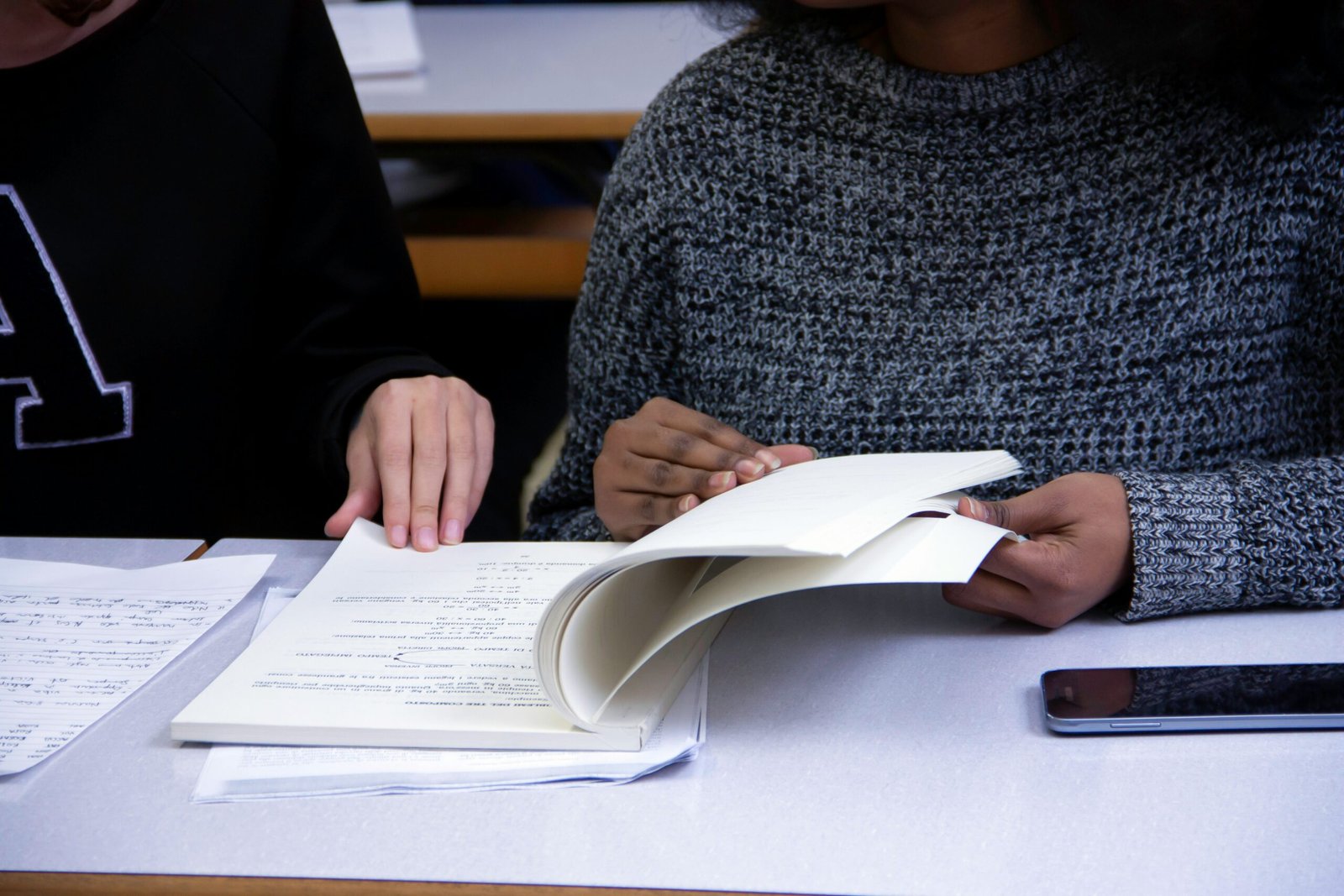Sharpen your test-taking skills with these essential SAT Reading Tips. Improve your score by learning strategies that will help you navigate the reading section with ease and confidence. Discover valuable techniques that will help you decode complex passages, identify key details, and answer questions efficiently. Whether you’re struggling with timing, comprehension, or vocabulary, these SAT Tips can help you achieve your goal.
What Is The SAT Reading Test?

The SAT is a standardized test widely used for college admissions in the United States. It consists of two main sections: Math and Evidence-Based Reading and Writing. Each section is scored on a scale of 200-800, and the composite score, which is the average of the two section scores, ranges from 400 to 1600. Improving your SAT reading score will positively impact your overall composite score, making it a critical area to focus on.
Breaking Down the SAT Reading Test
The SAT Reading Test is a significant component of the Evidence-Based Reading and Writing section, contributing 50% to your overall score in this category. The other half of this section’s score comes from the Writing and Language Test. While the Reading Test holds substantial weight, it is manageable with the right approach. Instead of memorizing formulas or grammar rules, it is essential to understand how to tackle each reading passage effectively.
Related Reading
What To Expect In The SAT Reading Section

In the SAT reading section, the questions will target your ability to understand words in context, your command of evidence, and standard English conventions. Additionally, the test will look at components such as the expression of ideas and best writing and language practices.
Typically, the SAT reading section offers three passages on different topics, such as US and world literature, history and social studies, and science. Students have 65 minutes to answer 52 multiple-choice questions in the SAT reading section.
The digital SAT
The digital SAT Reading and Writing section consists of two 32-minute modules, for a total of 64 minutes. Each module contains 27 questions, for a total of 54 questions in the section. That means you’ll have just over a minute per question.
The digital SAT is adaptive
The first module of each section contains a broad mix of easy, medium, and hard questions. Based on how you perform on the first module, the second module of questions will either be more difficult or less difficult. On the real test, you won’t be able to move onto the second module until your 32 minutes for the first module are up.
On the practice tests, you can skip to the second module earlier, but we recommend against it (more on this below). Note that there is no break between the first and second Reading and Writing modules—instead, your first break happens at the end of the section, before the first module of the Math section begins.
11 SAT Reading Tips For A Great Score

1. Get Familiar With the Types of SAT Reading Passages
There are four different types of SAT reading passages:
- literary narrative
- historical document
- social science
- natural science
The literary narrative passages are parts of novels or stories. The historical document passages are primary source documents, which take the form of speeches, letters, or editorials. Social science is the scientific study of human society and social relationships, so social science passages will be articles related to subjects such as anthropology, economics, or psychology. On the other hand, natural science is the scientific study of the physical world. Natural science passages will usually be related to chemistry, physics, or biology.
You will see a total of five passages in the test. Literary fiction and historical documents will each appear once. Additionally, there will be either one social science passage and two natural science passages, or vice versa. One of the passages you encounter will be paired with a graph, and another one of the passages is actually a pair of two short passages.
The questions will ask you to do everything from determining the meaning of words in context, deciding why an author included a certain detail, finding the main idea of a whole passage, comparing two passages, or even pinpointing information on a graph.
2. Choose your own order
Reading questions are not presented in order of difficulty, but they are in chronological order. Don’t be afraid to skip a hard question, and don’t worry if you can’t answer every question. Learn more about SAT strategies for working questions out of order.
3. Read what you need
You don’t have to waste time reading every single word of the passage and trying to become an expert on whatever the topic is. You have the passage right there in front of you. So, move back and forth between the passage and the questions, focusing only on what you need instead of getting mired down in all the little details.
4. Do a preliminary skim of the passage before looking at the questions
The first thing to do before looking at the questions is an initial skim of the passage. Skimming on the SAT entails reading only the important sentences and skipping the rest.
How do we know whether a specific sentence is important? The first and last sentences of every paragraph are usually important because they tend to give us a gist of what the paragraph is about. (One important exception: the first sentence of the overall passage is often just a catchy hook, lacking any substantial content.)
Transition words and phrases are important to look out for. Any sentences that feature contrast transitions (e.g., however, nevertheless, in spite of) or conclusion transitions (e.g., therefore, in conclusion, ultimately). Transition words and phrases can also act as clues that a sentence is NOT important. Any sentences with transitions that indicate detail (e.g., in detail, for example, for instance) or continuation (e.g., furthermore, additionally, in addition) are sentences that you should avoid for now. At this point of the process, you’re just trying to get a broad understanding of the passage without wasting time on the specifics.
5. Look for the Identifiers
Another SAT reading strategy is to first focus on locating identifying information. For example, names, dates, and times are key factors to help orient you within the text. We’ve already discussed how the SAT reading section curates passages on niche topics. So, while you may not be immediately familiar with the topic, you can always learn more about the primary goal of the text. For example, understanding the passage’s main idea is important to better analyze the passage.
6. Write a summary in the margins for each paragraph
As you go through the passage, stop after every paragraph and write a short summary of the paragraph in the margins. How short? Ideally, summaries should be no more than five words. You don’t even need to use words, as long as you can understand what you wrote! It’s not easy to condense several sentences into a few words, but embracing this challenge will help you to really internalize and retain your summaries, often to the point that you don’t need to revisit them while answering questions.
When you’re creating your summaries, focus on the big ideas, logical or narrative structure, and tone. Furthermore, remember that relationships between concepts and points of view are far more important than any technical stuff you may encounter. You should be able to answer all of the broader questions attached to the passage from just your summaries.
7. Use keyword skimming for more specific questions
There will be questions that pertain to specific details in a passage. You may remember advising to ignore the details when doing your initial skim. So, how do we answer these more specific questions without rereading the passage? This is where keyword skimming comes in.
Pick the most unique word in the question and scan for it in the passage. You can use your summaries to narrow in on the paragraph that likely contains the answer to the question. You don’t need to read —simply look out for the “shape” of the word (i.e., its length and which letters stick up or down).
8. Take dual passages one at a time.
One of your science or history/social studies passages will be a set of dual passages—two shorter texts about one topic. Do questions about the first passage first, questions about the second passage second, and questions about both passages last. This will save time and keep you from confusing the two passages when you’re evaluating the answer choices.
9. Predict before looking at the answer options
Instinctively, students tend to read the answer choices immediately after reading the question. Reject this instinct! In the SAT reading section, it’s more effective to predict the correct answer before looking at the choices. Even vague predictions are better than nothing.
Making a prediction first can help to focus your thinking so you don’t fall into wrong answer traps (more on that later). You can answer the broad questions using just your summaries; and make predictions based on what you jotted in the margins.
For the specific questions, keyword skim and read the sentences that feature your keyword. Then, you can take what you learned to predict the answer. If you’re still stuck after reading the answer choices, revisit your prediction. Ask yourself which choice is closest to your prediction and go with that one.
10. Save main idea questions for last.
For many of the Reading passages, the very first question will ask a general question about the main idea or purpose of the passage, the narrative point of view, or a shift that occurs through the passage. Those general questions are not good to do first because you haven’t read the entire passage yet. Once you’ve done most of the other questions, you’ll have a really good idea of the overall themes of the text.
11. Leave your opinions at the door
Often, in an English class, you are asked to give your own opinion, supported by the text. Not so on the SAT. Be careful when you see a question that contains the word infer , imply , or suggest . The answer may not be directly stated in the text, but there will still be plenty of evidence there to support the correct answer.
Related Reading
- How To Study For The Sat
- Sat Essay Prompts
- Sat English Tips
- How To Ace The Sat
- Digital Sat Tips
- Sat Math Topics
- Good Sat Score Range
- Sat Math Tips
- Sat Math Formulas
- Sat Math Section
- Sat Writing Tips
- Sat Vocabulary Flashcard
- Sat Reading And Writing
- Sat Grammar Tips
- Ai Sat Prep
- Tips for SAT
- SAT Tips and Tricks
- Last Minute SAT Tips
- Sat Essay Tips
- SAT Study Tips
Complete Step-by-Step Guide on How To Use Conch AI To Ace Your Classes (Efficient Writing, Studying, Note Taking, and More!)
Do You Have Any Questions?
Discovered a major bug or experiencing an issue, or need help using a certain feature, shoot as an email.
6 Important Time Management Tips And Strategies For Taking The SAT Reading Section

1. Save time on easier questions
One way to maximize your time efficiency on the SAT Reading section is to save time on easier questions. Not all questions on the test require the same amount of reading, so by working quickly on the ones that feel easier, you can save more time for the ones that are trickier.
2. Make predictions
Another time-saving strategy is to make predictions for the correct answer whenever possible. By coming up with a prediction in your mind, you can quickly identify the choice that best matches it. This can save you from spending too much time comparing answer choices.
3. Use the process of elimination
When you can’t make a prediction or find a choice that matches your prediction, use the process of elimination. By ruling out choices one by one, you can often narrow down the options and improve your chances of selecting the correct answer.
4. Don’t second-guess yourself
Trusting your initial instincts is crucial when taking the SAT Reading section. If a question seems too easy or obvious, go with your gut. Research shows that your first instinct is usually correct, especially if you’ve been diligently studying and practicing.
5. Leave time to review your answers
It’s essential to leave time at the end of each module to review your answers. If you’re stuck on a question, take your best guess and move on. By coming back to challenging questions later, you can ensure you’ve answered all questions within the time limit.
6. Don’t leave any questions blank
Lastly, never leave any questions blank on the SAT Reading section. Since the test doesn’t penalize you for wrong answers, it’s always better to guess than to leave a question unanswered. Even if you mark a question to revisit later, make sure to select an answer choice before moving on.
Write, Study, And Research 10x Faster For Free With Conch AI
Studying new material isn’t easy but tedious, time-consuming, and repetitive. I found Conch to be a lifesaver as it allows me to focus on learning instead of spending hours studying. With Conch, I can easily upload my course material, such as class notes, documents, lectures, videos, and more to generate study sets live. This feature has made studying much more efficient and effective.
Conch AI is the original AI detection bypass tool, and it guarantees that there’s a 99.99% chance that I won’t get caught after using it. If I use ConchAI to write essays, I will be undetected by algorithms like GPTZero and TurnItIn. This has been immensely helpful for me, as writing essays has become much faster and stress-free. Conch’s tool helps me add citations, rewrite content so that it’s undetectable by AI, and so much more. This has been such a time-saver and has allowed me to focus on actually learning the content.
With over 1 million users to date and growing, Conch has become a go-to tool for Chegg users, high school and college students, and anyone writing papers. Conch allows me to make my student life easier and bypass AI detection tools with ease. I highly recommend signing up and using Conch’s AI Essay writer and Study for free to experience its benefits firsthand.

Leave a Reply